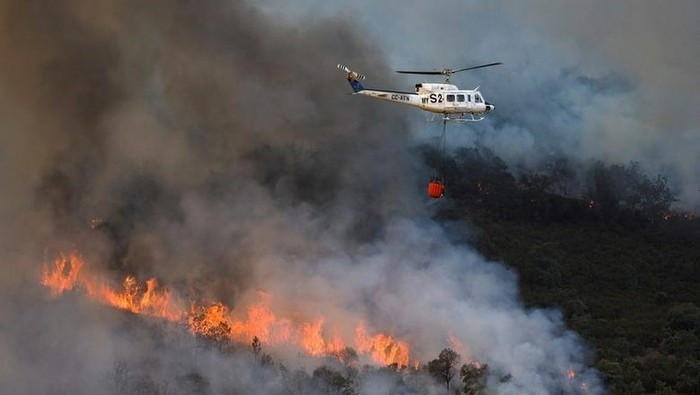Heat waves leading to widespread forest fires has been a big challenge for Europe. Since the beginning of 2022, more than 57,200 hectares of forest in France have been burned so far, six times the annual average. France recorded July as the driest month in more than 60 years, with only 9.7 mm of rain.
In Spain, prolonged drought also made July the hottest month since 1961. According to Spain's state meteorological agency, the May-to-July period was also the driest on record with water reserves at an all-time low.
The Dutch government also officially declared a water shortage on August 3. The UK has issued an amber extreme heat warning as temperatures hit 40 degrees Celsius.
Dry weather conditions have led to an increase in wildfires, with an unprecedented number of forest fires, especially in the Mediterranean. An area twice the size of the Italian capital of Rome was destroyed by fires in July alone. Although summer in Europe is not over yet, the year 2022 is already breaking records, with nearly 660,000 hectares ravaged, the highest level since 2006.
Heat waves and forest fires have had severe impacts on the life and economy of Europe. According to a forecast by the European Commission's Joint Research Centre (JRC), heat and drought could reduce the production of cereals, sunflowers and soybeans in Europe by 8-9%.
In response to the record heat, France has announced unprecedented restrictions on water use, such as banning people from watering lawns and washing cars. River traffic has also been affected as water levels continue to decrease. The marker at Kaub on the Rhine River, the most important shipping route in Europe, dropped to 49 centimetres on August 7. If the water level drops another 9 centimetres, the entire waterway will be inoperable.
According to the ESA, successive heat waves and dry weather have greatly affected the production of nuclear energy, hydroelectricity and wind power in Europe. Following the impacts of the COVID-19 pandemic, the conflict in Ukraine and the shutdown of French nuclear power plants, hot weather and drought have been exacerbating the energy crisis in Europe.
Drought and extreme heat are likely to affect the production of electricity from wind turbines, hydroelectric plants, coal-fired power plants and nuclear reactors. The capacity of hydropower plants has been reduced due to the drought, while weak winds also making it difficult for wind power production.
Experts said that the combination of these factors could force European countries to switch to using more gas to secure electricity supplies, thereby pushing up energy prices.
Heat waves have also made severe impacts on Europe’s tourism industry, which has been still struggling to recover following the COVID-19 pandemic. Although this summer was considered the biggest tourist season in Europe since 2019, the hot weather has been hindering many visitors’ plans. Many travellers have had to delay their trips or change their destinations.
Obviously, severe weather has been having a negative impact on many areas and has become a factor hindering the recovery of the European economy.
















